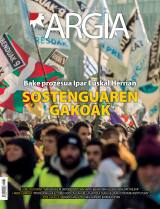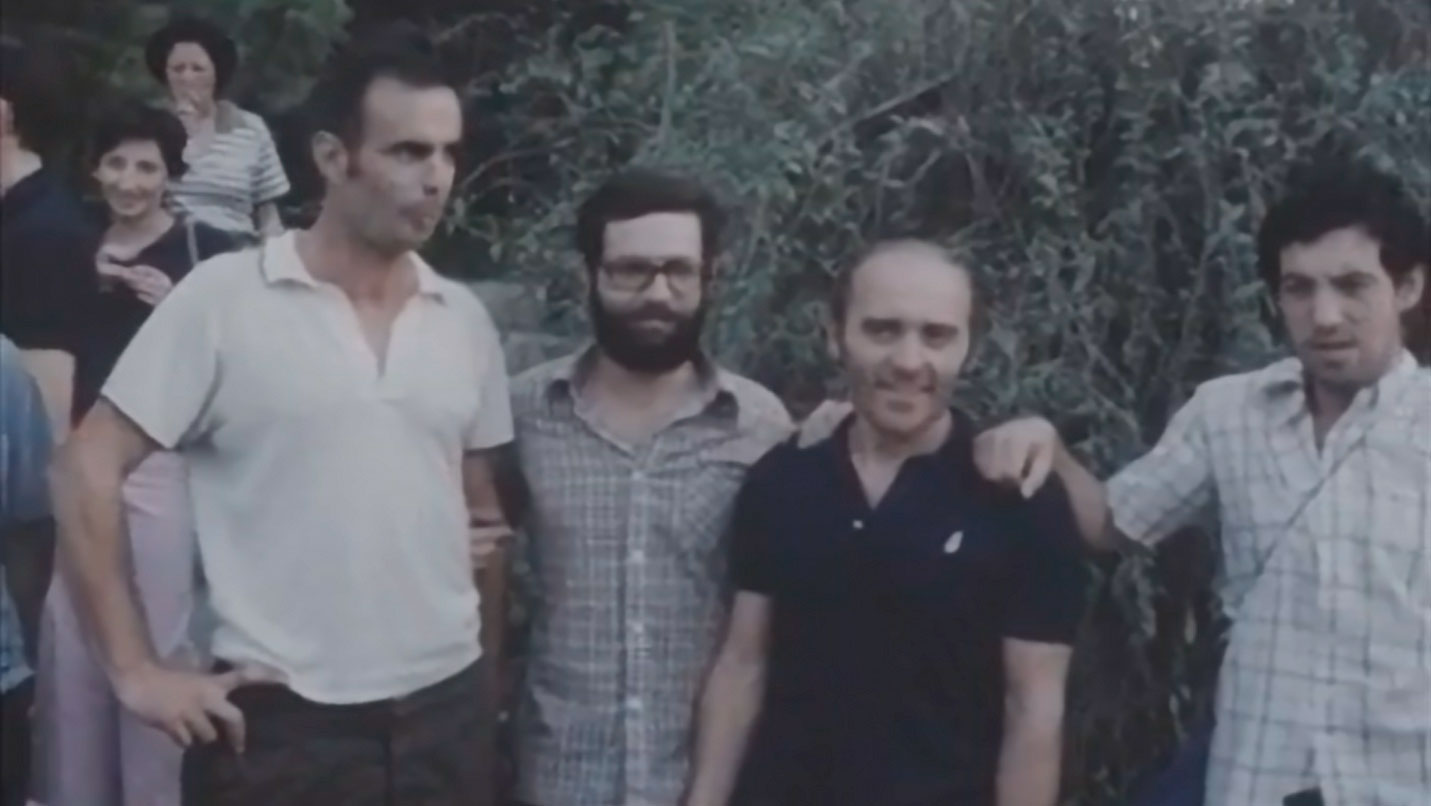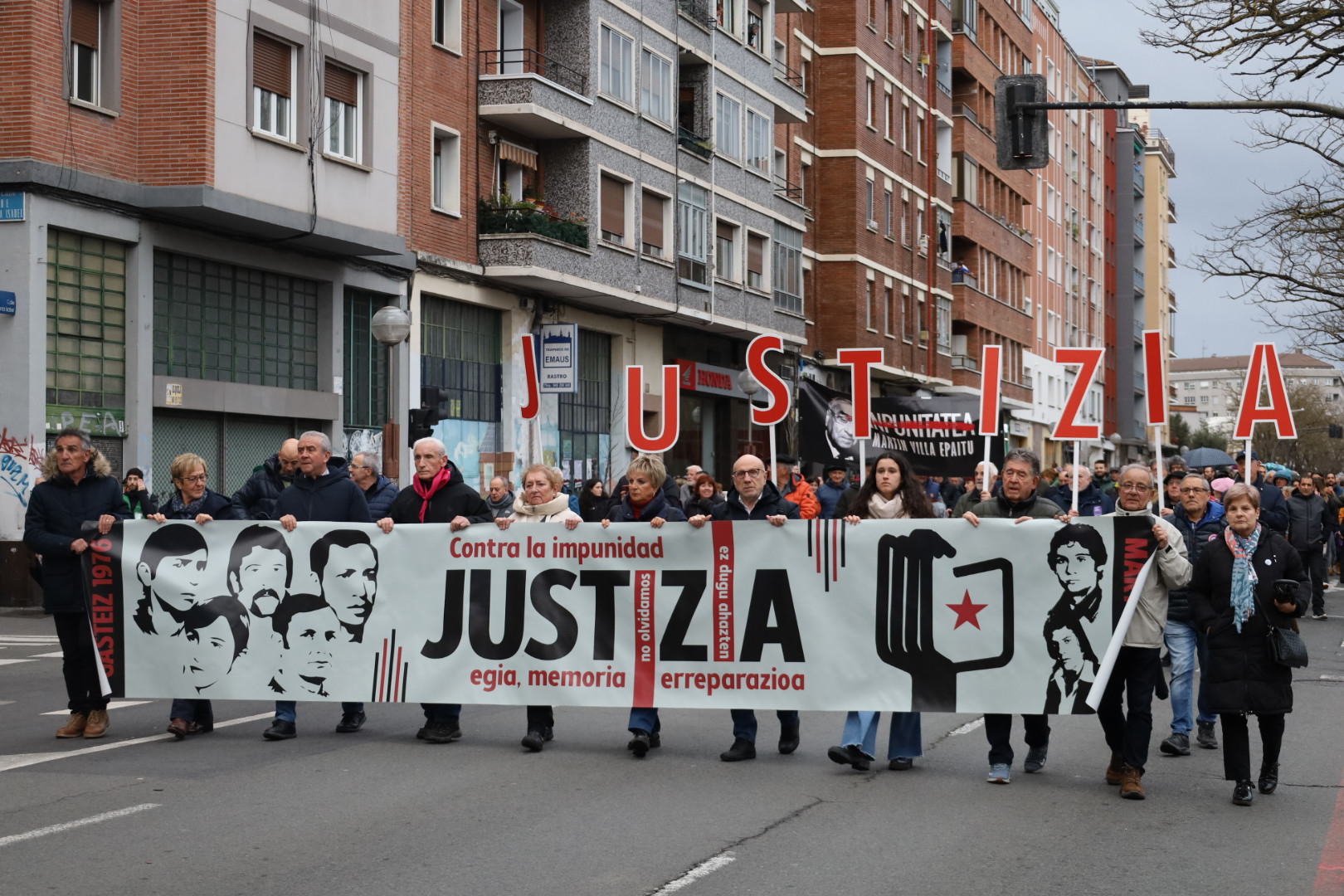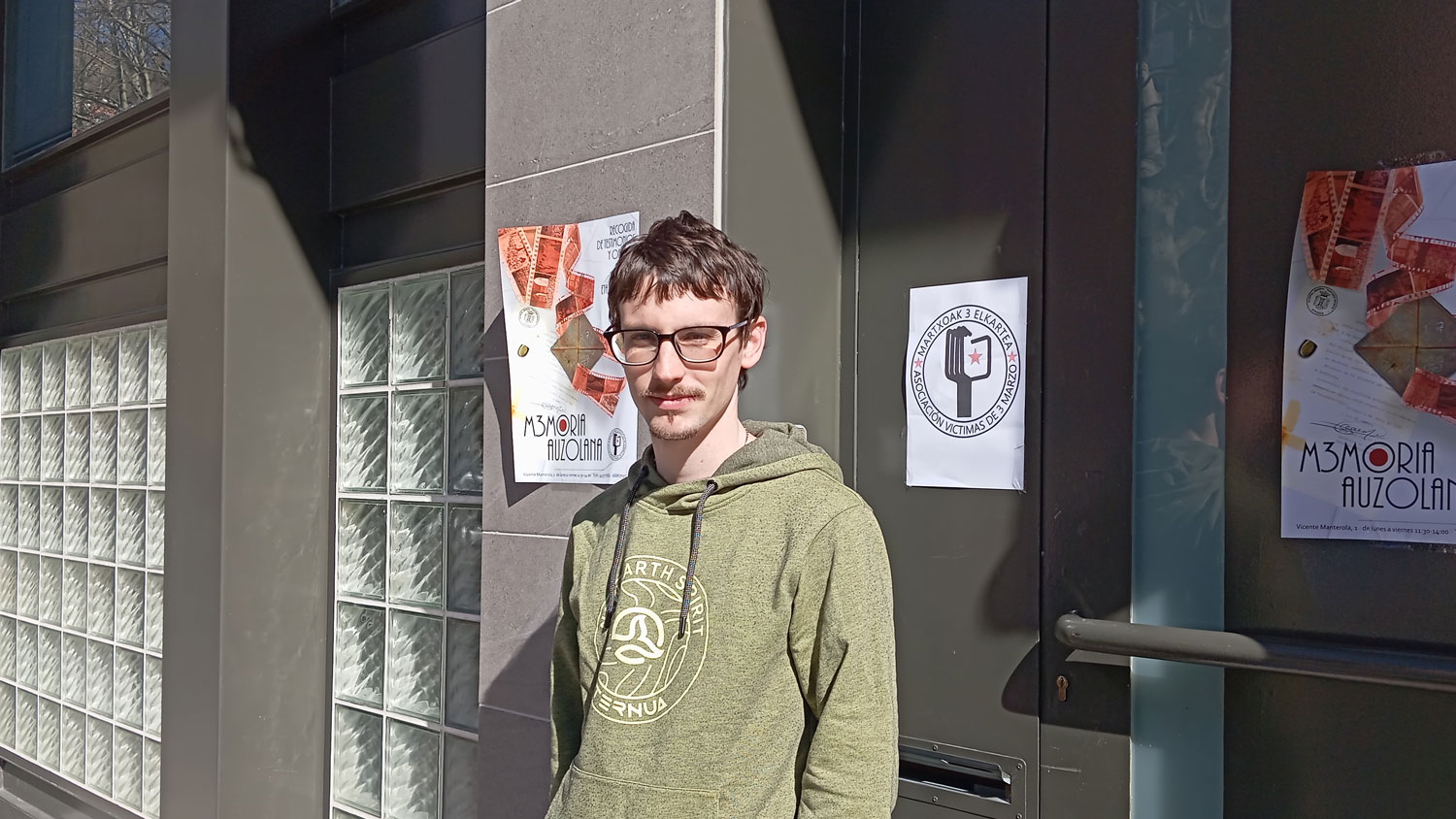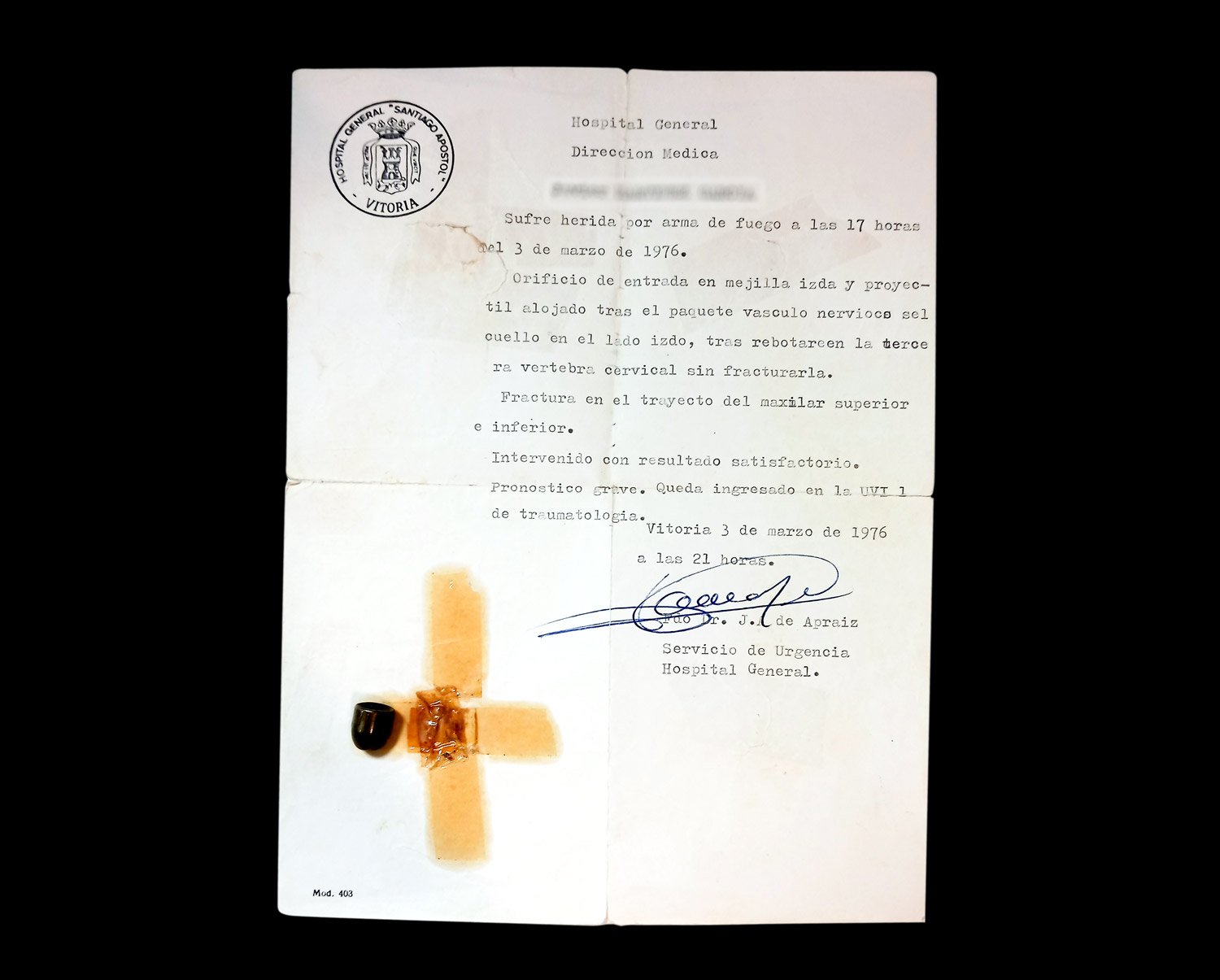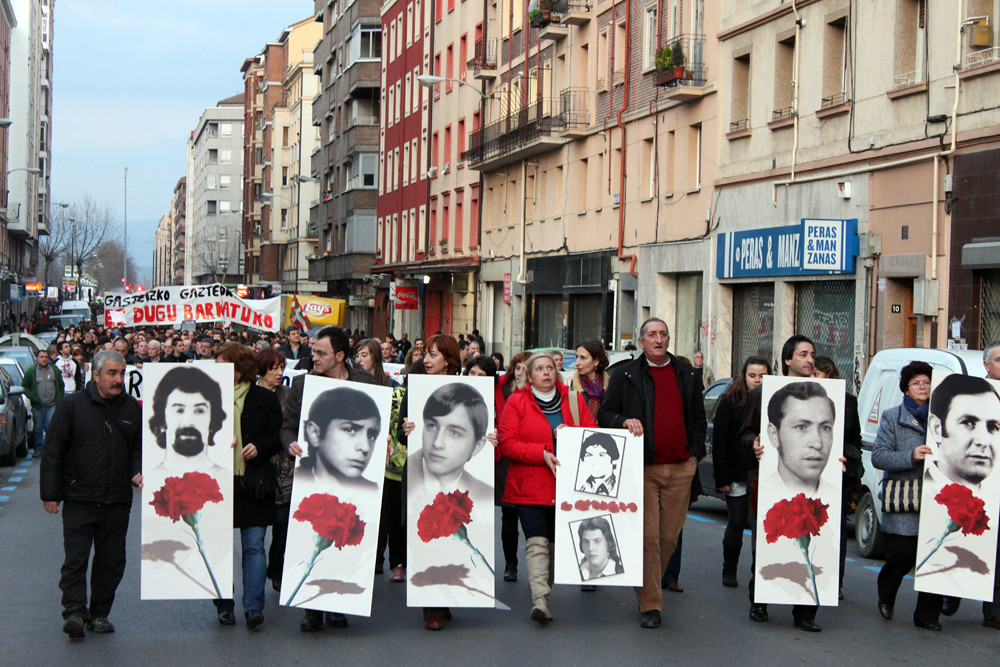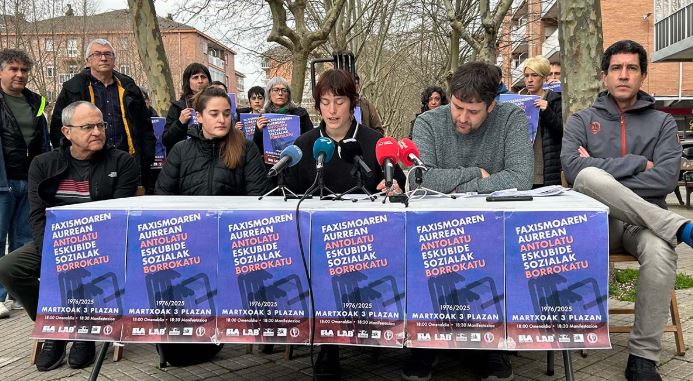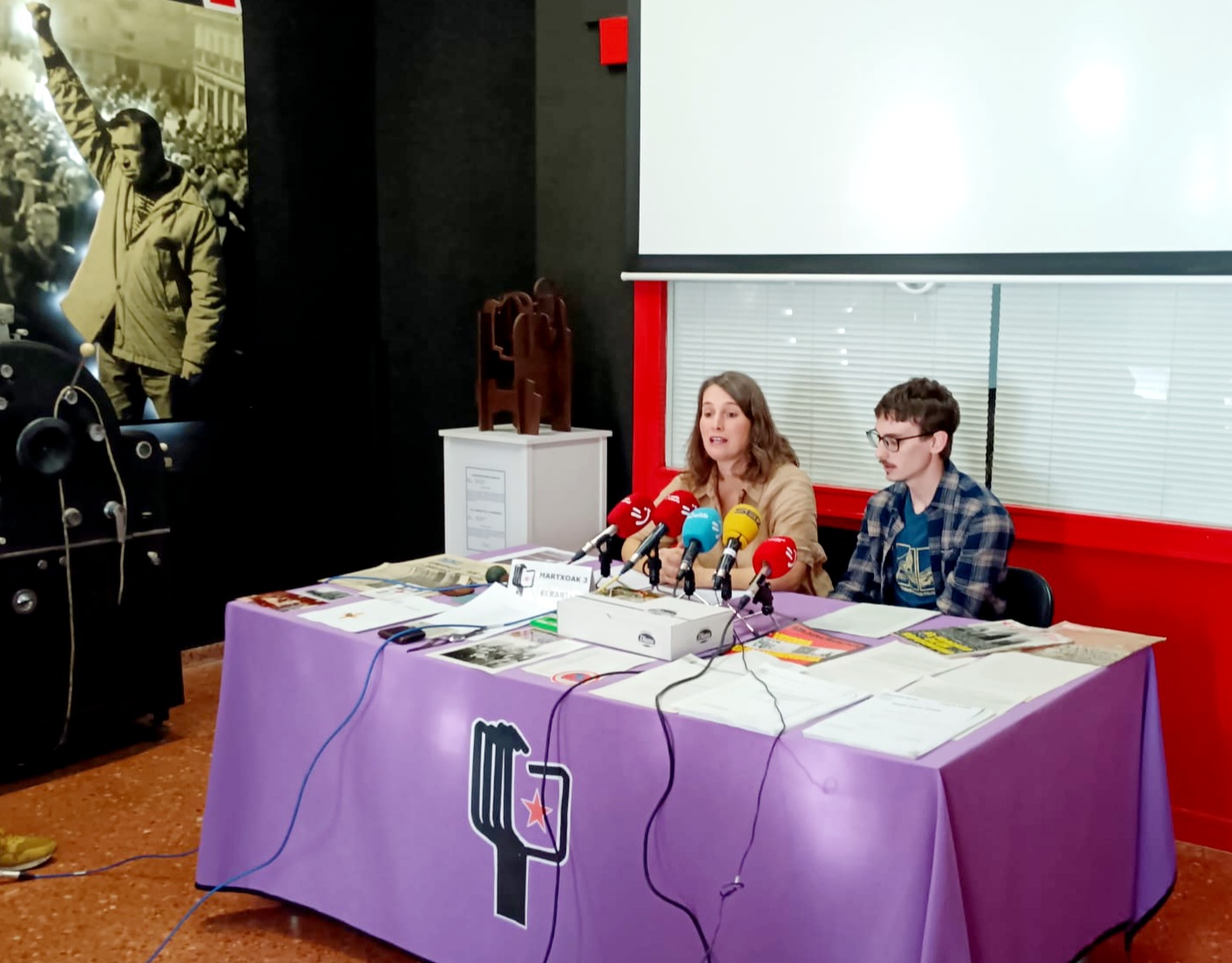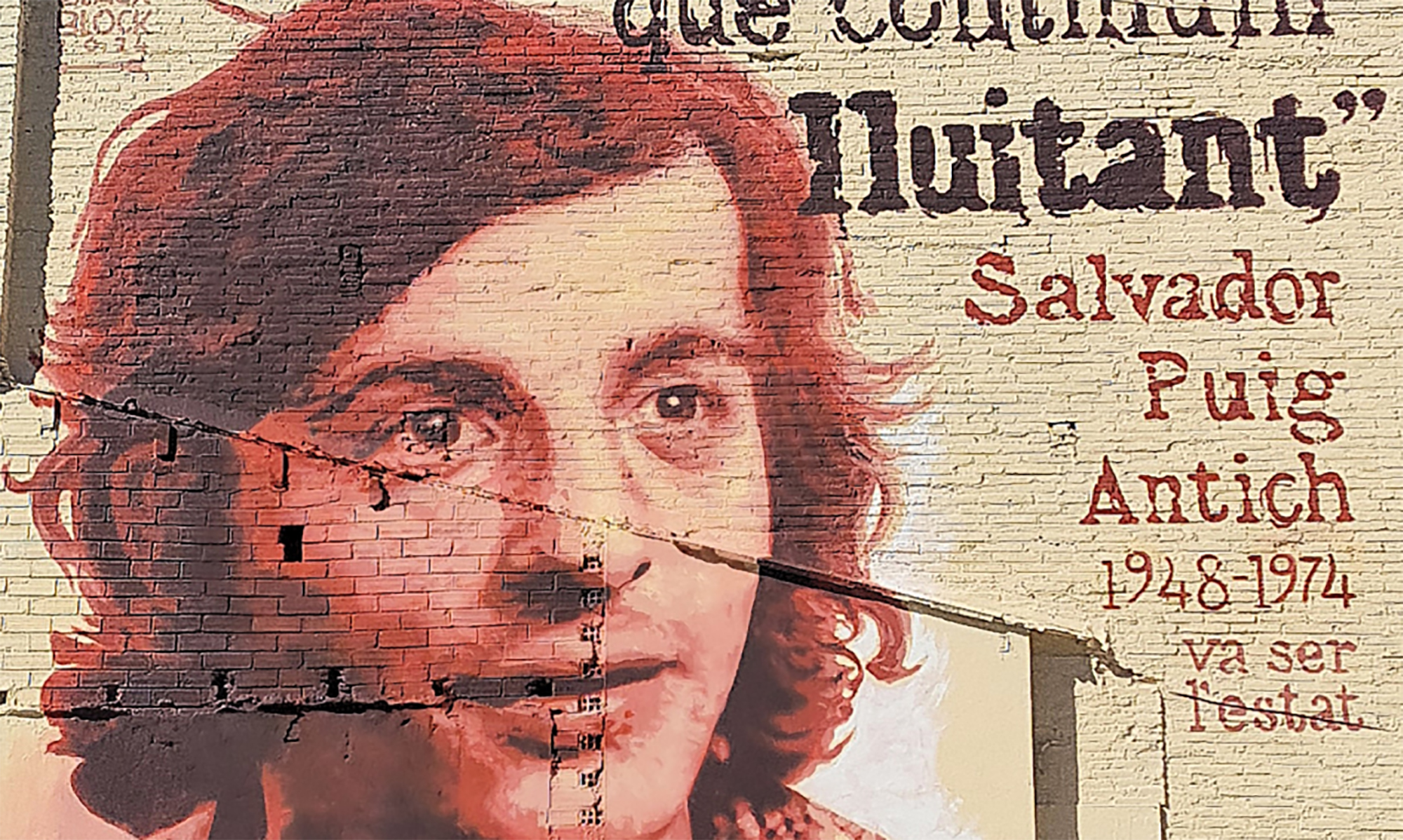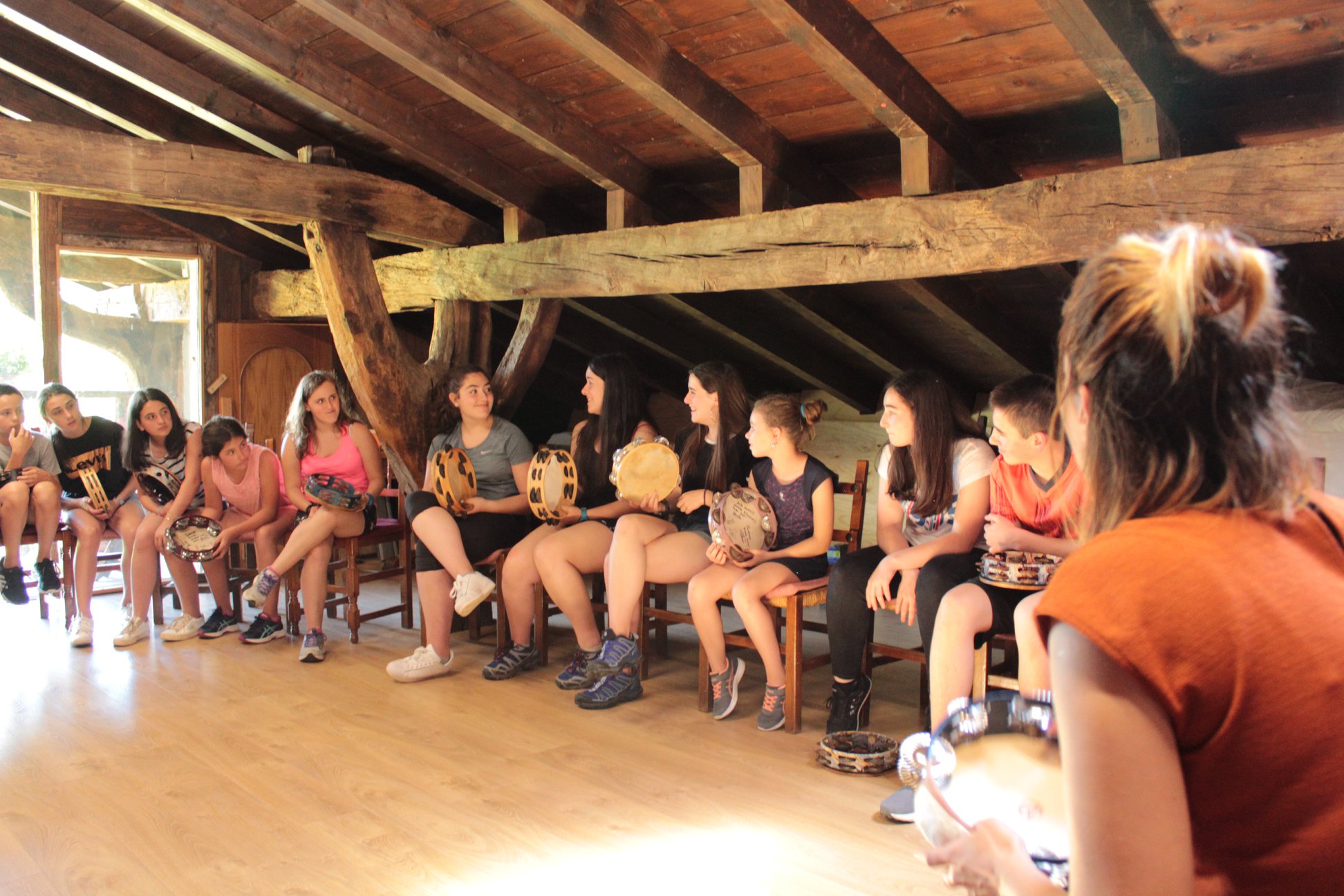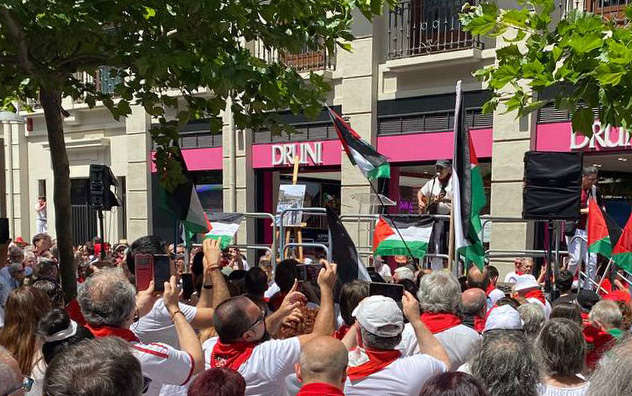"If it were today, I would be in jail for the photos of then."
- Cholet, vest and cigarette on the lips. Always with humor and smile. Always close to people in the neighborhood. War photographer in his own home during the toughest conflicts.
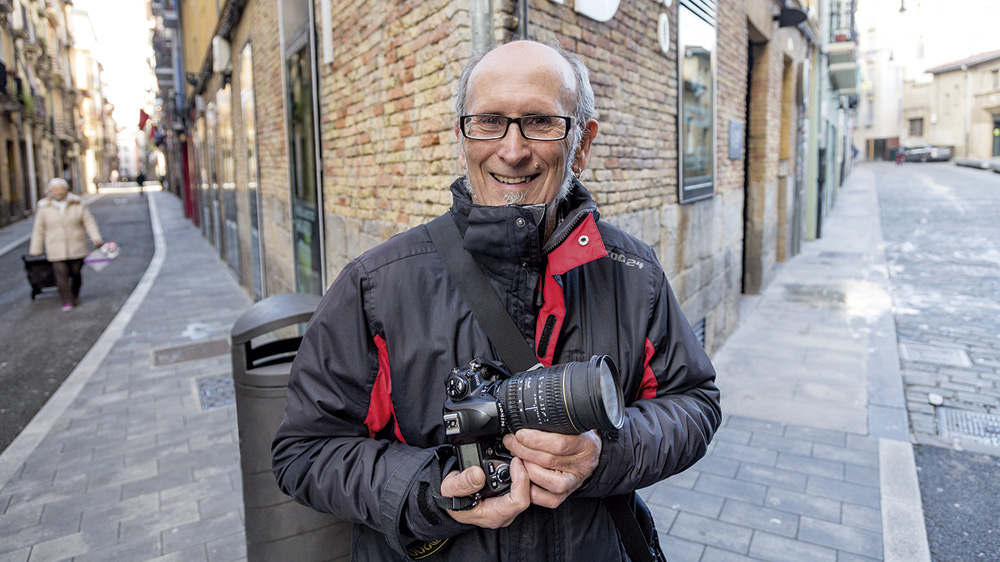
Prentsa argazkilaria. Hamabost urtez aritu zen Egin egunkarian, itxi zuten arte, eta batzuk gehiago Euskaldunon Egunkaria-n eta ARGIA-n. Berak hartutako argazkiak 80 eta 90eko hamarkadetako Nafarroako gatazka garrantzitsuenen adierazgarriak dira. Poliziaren eta eskuin muturreko taldeen erasoak izan ditu maiz eta urte bat eman zuen Carabanchelgo kartzelan. Memorias de Lacalle liburua plazaratu berri du Txalaparta argitaletxearekin, bere 400 bat argazkirekin. Liburu salduenetako bat izan da azken hilabeteotan Euskal Herrian.
It has long been linked to Jarauta Street, but are you from Etxauri?
Yes and I lived in Etxauri until I was 12 years old. Then they came to Pamplona and their parents opened the bar Lacalle de Jarauta. I started working with my parents and siblings at age 14 at the bar. Work in the morning and study in the afternoon.
And how did you get passionate about photography?
I started with Nicolás Ardanaz, the pattern of a drugstore on Calle Mayor. With him, I learned how to discover what that art is, how to reveal photos, how to positify them, and what the whole process is like. I also did mailings, and with my first camera, one of those heavy Zenit, I gradually started to train myself. My first professional job was in 1976 with Herce photographers. We would go to village parties with a cardboard bull and a horse for people to portray. Imagine what it was for a young boy like me! In the villages of the mountain, quite well, but in the Ribera they put the bull and the horse as comb. We were taking pictures, revealing ourselves in Pamplona and returning to the villages to distribute. I also started making weddings, baptisms and communions.
How did it get to the press, to Egin?
Before it was disseminated, a great campaign of support was made and we participated in the collection of funds in the bar. I started doing one-time collaborations in the early 1980s, and then joined the task force in 1988, until it was closed in 1998. I have also worked a lot for Euskaldunon Egunkaria and for ARGIA.

You've had to suffer persecution both in the bar and in the photo.
Yes, it is. In 74, my wife and I took over the bar and our four children were born. It was a very lively bar. At the end of Franco's time, the atmosphere was vibrant and many patriots gathered there. In 1976 I placed a big three-meter ikurrina, Ceferina Fontellas, owner of the Abarzuza bookstore, which sewed in two days. Then they made me pay well. Soon began the threats, the attacks, the beatings… sometimes they were uniforms and other guerrillas of Cristo Rey and others, but, undoubtedly, the hardest was the artifact that on 27 March 1979 we placed in the bathroom of the bar. My wife, our two older children and I died shortly. A slightly weird man walked into the bar, took two gas reds and headed to the toilet with a bag. He ran out of there without having received a spin of nine pesetas. It's all very rare. When I heard the tanker dripping, I went to see what was going on and there I found the bomb ready to explode. It was just as bad that there were some cables in the eye, and so I didn't touch it, if not -- I had everybody get out of there. It took them two hours to come after they called the explosives technician. When the bomb was dismantled, he gave a portazo and sent a police officer to the front of the street. It was terrible. We had a very bad time, but I will never forget the solidarity and help of the people who came later. Neighbors friends, clients, a lot of people... they worked on auzolan to fix the bar and raise money to reopen it. They were two months non-stop. The day we made it known, we made a big party. On Jarauta Street, hundreds and hundreds of people gathered, lots of charanges and musicians and many other bar waiters who came to help them with their most elegant suits. Truly moving. The case, of course, was not investigated and stayed there and the Civil Guard smiled at me. They said, "How are you not going to put bombs in your bar considering the people who are there."
And soon after Carabanchel?
Yes. Attacks and threats continued, and there was no peace. Two years later, in 1981, I was arrested on charges of belonging to an armed group. I had a very bad time. They held me at the Civil Guard's headquarters for nine days and they did everything: beatings, clubs, I pulled out at night with my head covered and they put a pistol on my head with all kinds of threats… They repeated me a thousand times what I and my family were going to do. It happens very badly. Psychic torture was harder than physical torture. Maybe after the first two kicks you feel less like the next ones, but the psychic is very disappointing. From there they took me to Carabanchel. I tried to denounce him and taught the judge how he had his legs and testicles filled with bruises, but he told me that it could be a result of a car accident and he did not accept the complaint. When I was sent to jail, I thought I would at least take a break. I was there for about a year and there were more friends than here. There were a lot of people going through the bar.
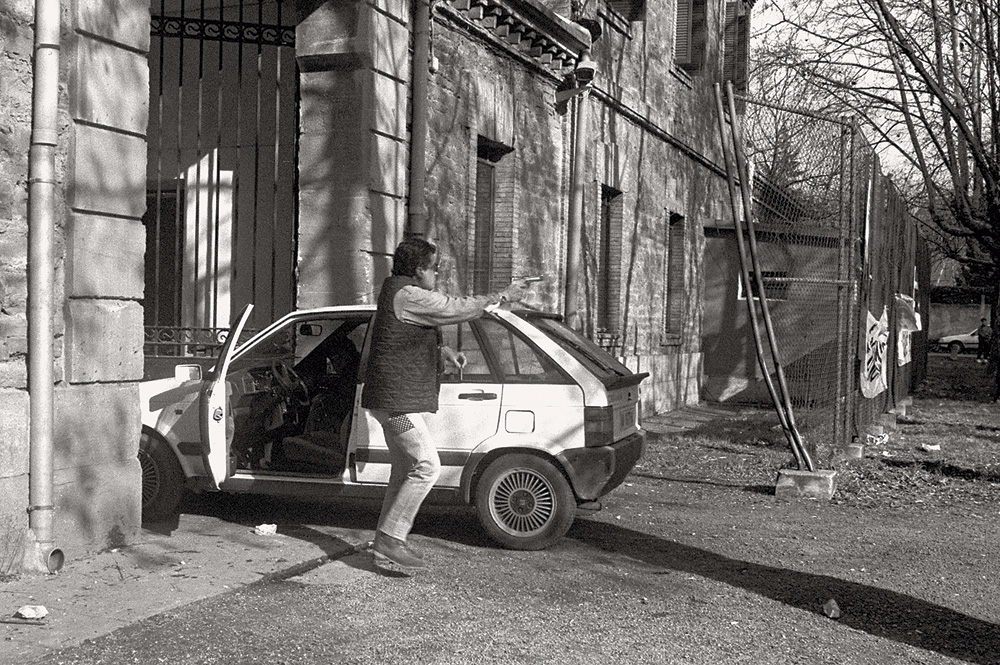
What exactly were you accused of?
They said I controlled from my bar the cops that were going to eat to another bar, but that's impossible because you don't see, you stay on the corner and you stay beyond. The lawyer showed it, and eventually I went out in jail for a year.
I went back to the bar, but we saw clearly that we couldn't live there and so on. Every weekend the police entered to evict the premises. In all categories. The attacks and the persecution were ongoing, and in addition to all of this, in the Old Town there was a lot of heroin and there was no way to live there with four young children. In the 1980s, it was very difficult to live in the Casco Viejo. So I started working in Egin, closed the bar and went to live in Zizur.
And the photographer always on the front lines of conflict?
Yes, it is. I was in the mobilizations against the landfill they wanted to build in the Aranguren Valley, against the highway of Leitzaran, in Itoiz, in the gaztetxe Euskal Jai, in the demands of the women and the passions, in the demands of the Basque Country… and always with problems with the police. I've been stuck many times and then I've been taken off the photo reels and blackened. Other times, on the other hand, I have run faster and managed to save the roads by doing the way hidden or with the help of other people. Once, for example, the Civil Guard started shooting in a protest against the Irurtzun-Andoain motorway and I took a lot of photos. When I saw a pattern coming towards me, I managed to pull out the reel and instead put another one in the camera. I hid the full in the underpants, and when the guards came in, without asking for any identification, they took the spur out of the chamber and put it black, saying, “Take it, that you publish it tomorrow in Egin.” So I did, the next day all the pictures were taken. I denounced through the Society of Photographers and since then, in the demonstrations on the freeway, I was not allowed to go to the front line to photograph myself. There were always guards next to me.
But I haven't always been so lucky. Once police had beaten three young people in Calle del Carmen, near the monolith of Miguel Castillo, that the police had just shot him to death. I was taking pictures, and without realizing it, three policemen came, kicked my camera out, tarnished the reels and hit me a bunch of blows. I was almost unconscious, lying on the ground, and less badly than a neighbor came and took me home.
What's been the wildest load you've ever seen?
Aranguren. There were a lot of older people sitting, closing the road, and the police started firing balls two meters away. Only two meters! People bleeding, on the ground…
Another day, in an injunction protest, they placed a heavy burden in front of the Civil Guard headquarters and the photographers received a lot of blows. The EFE photographer had his arm broken and there was no way to transfer him to a hospital. Many times we've had a really bad time.
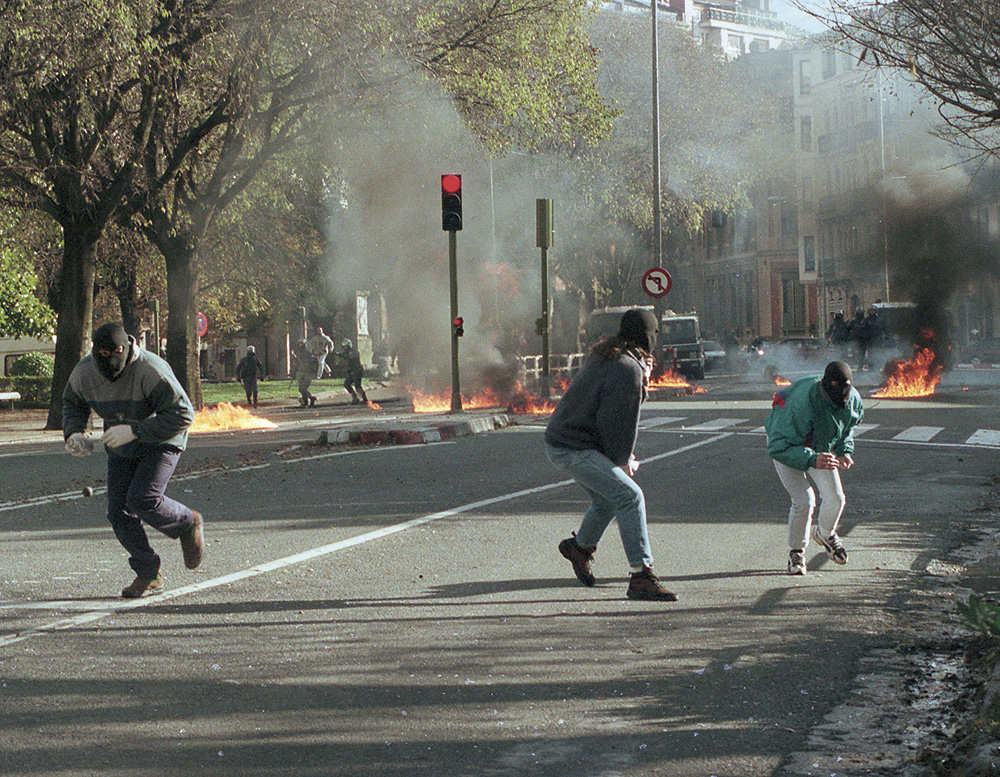
You’ll have a lot of anecdotes…
I was often told that being there was a sign that something was going to happen. And sometimes that made me sick. Once I arrived at the Council to attend an ordinary press conference and a police officer started to touch me with the usual motto. Answer: “Oh, you don’t know? In about twenty minutes all the solidarity of Itoiz will appear to chain them,” and I went up to the press conference. I went down and found all the sidewalk full of “black” policemen, of those specials. I left. From then on, that agent no longer asked me.
The passioners, on the other hand, always said “While Joxe is here, we are quieter” and the solidarity of Itoiz called me “Jodido paparazzi” as a joke. The police, on the other hand, called me “the son of a brit with a cholet.” "Listen, here's the mucus taking pictures. Beware of what you do,” they said at the beginning, but then, when the tension overflowed, the host started and everything ended.
Sometimes the police asked the photographers not to take our faces off, and I told them that if they didn't want to show up, it was better to cover their faces. I'm not here to paint her face, but I'm not going to cover her faces, I told them. In Aranguren, for example, this happened to me, and the next day, the civil guards came with their faces covered.
Why did he leave his profession?
Close was a big stick. I worked with other media, very willingly, but then the Argazki Press agency was set up, and as I didn't get in, I got less and less work. In addition, your tags will hang immediately. So I could not continue and I went back to the hospitality. Now I make the pictures I want.
What do you think of the Mordaza Law?
In this profession, and in society in general, we have made technical progress, but let's go back in freedom. A lot of it. On the one hand, there's now much less movement in the street, and not because there's no need, but because people stay at home out of fear of losing their jobs, I imagine. On the other hand, today it is much more difficult to work with the Moorish Law. Many of the photos I've made would be unthinkable today. If it were today, I would be in jail for those pictures. I'm sure you wouldn't pay the fine.
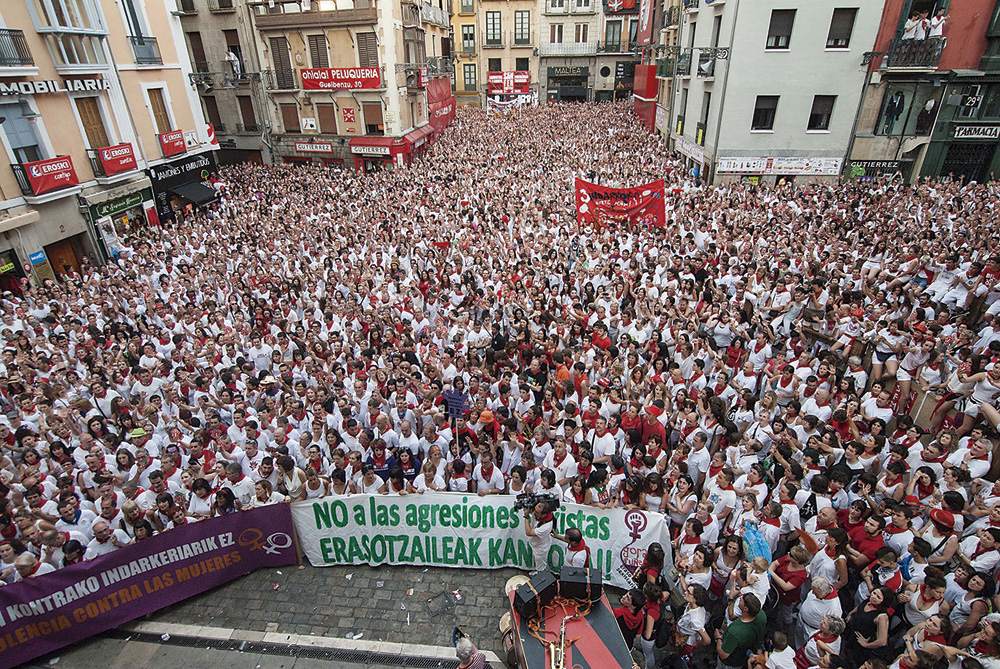
How do you think the current press photograph is?
Very monotonous. Press conferences are always quite boring. On the other hand, in my opinion, it must be denounced that there is a tremendous intrusion today. A lot of people are sending photos and videos to all the sites, just to see their name in the media, and newspapers and magazines take it all. They also enter when they don't have to enter, looking for extreme images. This means that today many media outlets don’t want to hire staff anymore, just fill the pages with specific freelancer jobs and get them free of charge.
The bigger the morb, the better.
I am the opposite. I once took a picture of a worker who died in an occupational accident. Terrible. I didn't want to publish. Now, after many years, I've put it in the book. I was also in the disaster of the campsite in Biescas or in the terrible train accident in Huarte, but I did not want to take pictures of people. Others have less scruples. I met a DYA photographer who worked in a newspaper here. I knew the accidents before anyone else, I would ride a motorcycle and arrive before the ambulance. He said that on more than one occasion he had arrived there and moved the corpses and the wounded to make the photos he wanted. I told him I wasn't a photographer, but a gross child! Now all this morb is considered normal.
How did the idea of making a book come about?
People would tell me many times when I had to do an exhibition or something with all those special pictures, but I would rather make a book after I retired. My last job I did in the hospitality industry and when I retired I got a good scanner. I started scanning the negatives. I went with my project to the Txalaparta editorial and immediately began to work. I must particularly thank Mikel Soto because he has put all that in order.
What photos would you like to make?
Holy Virgin! Well, by uniting all the political parties in Navarre, claiming that it is also Basque Country, along with other Basque provinces.
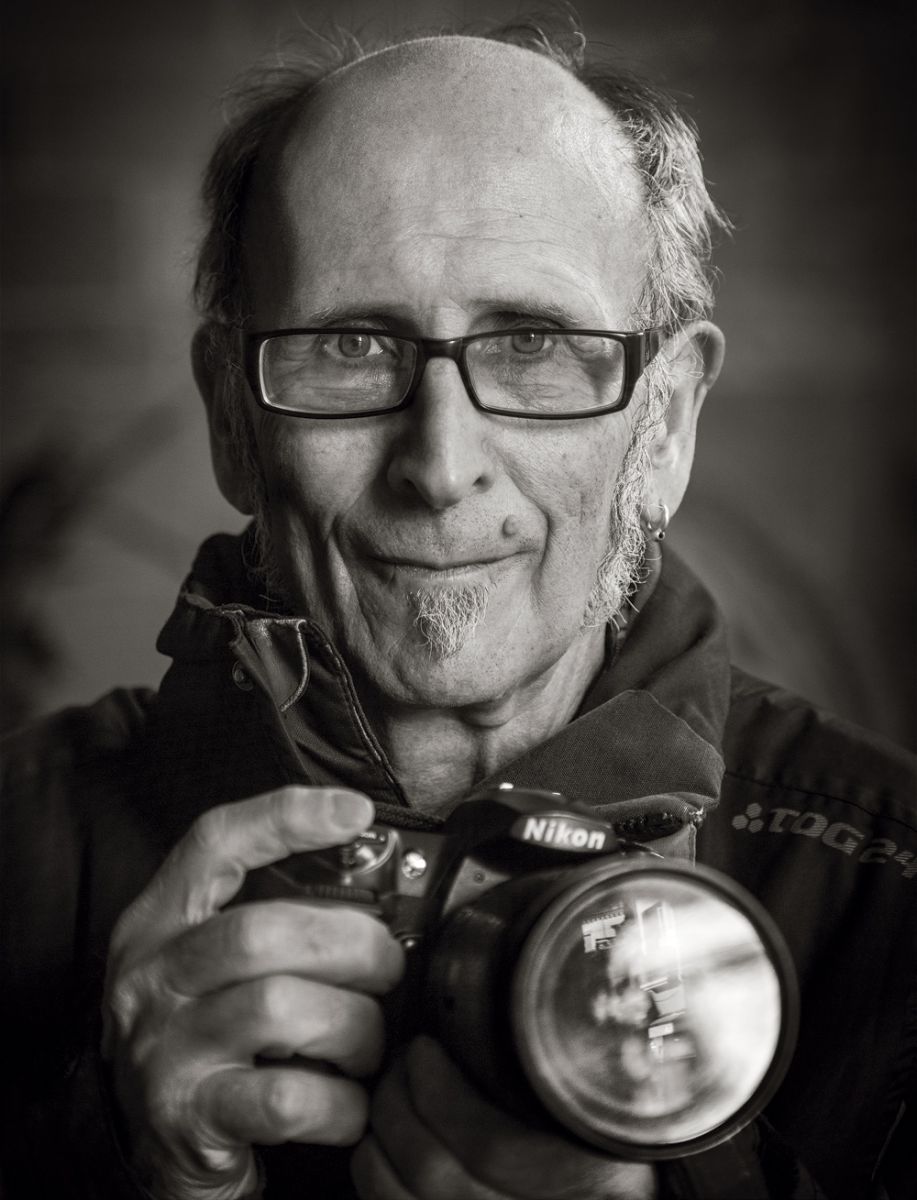
“Robert Capparen jarraitzaile sutsua naiz. Berak esan ohi zuen: ‘Argazkia ez bada ona, behar zenuen bezain gertu ez zeundelako da’. Orduan ez zuten teleobjektiboek eta halakoek balio, lehen lerroan egon behar zenuen eta kito. Gertu ez bazeunden ez zenuen ezer jaten. Hori bai, ostiak, pilotakadak eta harrikadak jasotzen zenituen”.
“Oso gustura lan egin izan dut, oso identifikatuta sentitu naizelako barrikadako jendearekin. Jendeak harrera ona egiten zidan beti eta askotan lagundu ere bai”.
Hiru bideo dira (albiste barruan ikusgai). Batak jasotzen du, grebak antolatzea leporatuta, Carabanchelen espetxeratu zituzten Jesús Fernandez Naves, Imanol Olabarria eta Juanjo San Sebastián langileak espetxetik atera ziren unea, 1976ko abuztuan. Beste biak Martxoak... [+]
49 urte eta gero Espainiako Poliziak Gasteizko Maria Sortzez Garbiaren katedralean eraildako bost langileak oroitu dituzte beste behin astelehen arratsaldean. Milaka pertsona batu dira Zaramagatik abiatutako eta katedralean amaitutako manifestazioan. Manifestari guztiek ez dute... [+]
Martxoak 3ko sarraskiaren 49. urteurrena beteko da astelehenean. Grebetan eta asanblada irekietan oinarritutako hilabetetako borroka gero eta eraginkorragoa zenez, odoletan itotzea erabaki zuten garaiko botereek, Trantsizioaren hastapenetan. Martxoak 3 elkartea orduan... [+]
1976ko martxoaren 3an, Gasteizen, Poliziak ehunka tiro egin zituen asanbladan bildutako jendetzaren aurka, zabalduz eta erradikalizatuz zihoan greba mugimendua odoletan ito nahian. Bost langile hil zituzten, baina “egun hartan hildakoak gehiago ez izatea ia miraria... [+]
Martxoaren 3ko Memoriala hornitzeko erabiliko dira bildutako objektuak. Ekimena ahalik eta jende gehienarengana iristeko asmoz, jardunaldiak antolatuko ditu Martxoak 3 elkarteak Gasteizko auzoetan.
Vietnam, February 7, 1965. The U.S. Air Force first used napalma against the civilian population. It was not the first time that gelatinous gasoline was used. It began to be launched with bombs during World War II and, in Vietnam itself, it was used during the Indochina War in... [+]
Greece 1975. The country began the year as a republic, three weeks earlier, in the referendum on 8 December 1974, after the citizens decided on the end of the monarchy.
A decade earlier, in 1964, when King Paul I died, his son Constantine took the throne at the age of 23.
But... [+]









